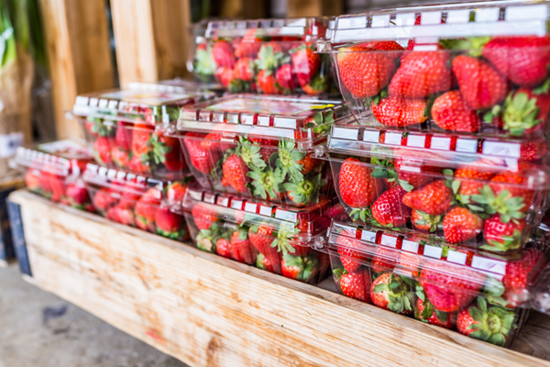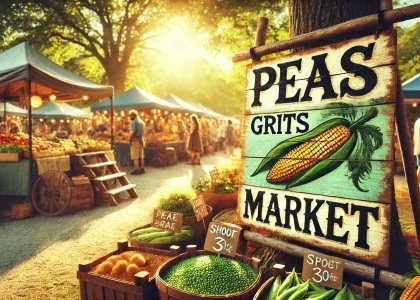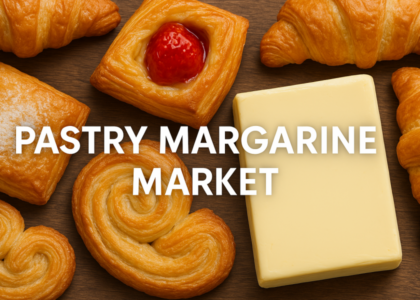Projected to attain a value of US$ 195.7 billion in 2022, the global rigid food containers market is poised for robust growth, exhibiting a steady 4.8% compound annual growth rate (CAGR) from 2022 to 2032. Forecasts indicate a substantial escalation, with the market expected to surge to US$ 314.2 billion by 2032. This trajectory underscores the increasing demand for rigid food containers worldwide, driven by factors such as evolving consumer preferences, advancements in packaging technology, and the expanding food and beverage industry. The market’s upward momentum signifies its pivotal role in meeting the packaging needs of diverse food products.
Functioning as a reliable and user-friendly packaging solution, rigid food containers ensure secure storage and effortless handling, facilitating prompt consumption. The versatility of packaging formats, including bottles, trays & clamshells, cans, and boxes, enhances their portability, catering to consumer convenience. Additionally, rigid food containers play a crucial role in extending the shelf life and preserving the nutritional value of food items over an extended duration. This surge in consumer preference for convenient and portable packaging options has significantly bolstered the market, driving increased sales of rigid food containers.
FMI projects a 1.5-fold growth in the German rigid food containers market, surpassing the current market value, attributed to the rising consumption of packaged food within the nation. Notably, Germany stands as the fourth-largest packaged food market globally, as reported by the Food Export Association. In 2021, the United States exported approximately US$ 1 billion worth of consumer-ready foods to Germany, a trend anticipated to persist in the coming decade, consequently propelling the demand for rigid food containers in the German market. This underscores the pivotal role of packaging solutions in catering to the escalating preferences for packaged food items.
Request Sample Report: https://www.futuremarketinsights.com/reports/sample/rep-gb-5124
The growth of the e-commerce industry is also driving the demand for rigid food containers. As more consumers opt for online shopping, there is an increasing need for packaging solutions that can protect food products during transportation. Rigid food containers are well-suited for this purpose, as they are strong and durable and can help to ensure that food products arrive at their destination in good condition.
The global rigid food containers market is highly competitive, with a large number of manufacturers offering a wide range of products.
Key Takeaways from Rigid Food Packaging Market
- Based on material, rigid food packaging made from bagasse material is expected to cover 12.4% of the global market share in 2022.
- The cups & tubs segment by packaging type is anticipated to expand by 4.3% CAGR during the forecast period in the rigid food packaging market.
- Based on application, the baby food category is estimated to grow 1.3 times the current rigid food packaging market value during the forecast period.
- The U.S. rigid food packaging market is set to generate a share of around 12.7% in 2033.
- India is projected to cover about 5.4% of the rigid food packaging market share throughout 2023.
Competition Landscape: Rigid Food Packaging Market
- Amcor plc,
- Greif Inc.,
- Crown Holdings, Inc.,
- Mauser Packaging Solutions,
- Berry Global Inc.,
- Silgan Holdings Inc.,
- Sonoco Products Company,
- Pactiv LLC,
- Printpack,
- ITC Packaging,
- DS Smith plc,
- WestRock Company,
- Sealed Air Corporation,
- Smurfit Kappa Group plc,
- Huhtamaki Oyj,
- Genpak, LLC, and
- Georgia-Pacific LLC
among others are few of the key players spurring the global rigid food packaging market.
Higher Adoption of Smart Packaging Solutions
The integration of active and intelligent packaging into smart packaging solutions not only provides cost-effective methods for monitoring environmental conditions throughout the food supply chain but also introduces value-added approaches to product packaging. This innovative combination incorporates antimicrobials, moisture absorbers, modified atmosphere packaging (MAP), and value-added packaging (VAP) at an accelerated pace. These elements work synergistically to delay food product ripening and extend shelf life by minimizing microbial growth. Consequently, the increasing adoption of active food packaging reflects a growing preference among end consumers for solutions that enhance both quality control and engagement with packaged products.
Buy Now/Purchase: https://www.futuremarketinsights.com/checkout/5124
Rigid Food Packaging Market Outlook by Category
By Material:
- Plastic
- Paper & Paperboard
- Metal
- Glass
- Bagasse
By Packaging Type:
- Trays & Clamshell
- Bottles & Jars
- Cans
- Cups & Tubs
- Boxes & Cartons
- Others (Bowls, Cutlery)
By Application:
- Meat, Poultry & Seafood
- Dairy Products
- Bakery & Confectionary
- Ready-to-eat Food
- Baby Food
- Produce Food
- Other Foods (Spices, Sauces)
About Future Market Insights (FMI)
Future Market Insights, Inc. (ESOMAR certified, recipient of the Stevie Award, and a member of the Greater New York Chamber of Commerce) offers profound insights into the driving factors that are boosting demand in the market. FMI stands as the leading global provider of market intelligence, advisory services, consulting, and events for the Packaging, Food and Beverage, Consumer, Technology, Healthcare, Industrial, and Chemicals markets. With a vast team of over 5000 analysts worldwide, FMI provides global, regional, and local expertise on diverse domains and industry trends across more than 110 countries.
Contact Us:
Future Market Insights Inc.
Christiana Corporate, 200 Continental Drive,
Suite 401, Newark, Delaware – 19713, USA
T: +1-845-579-5705
For Sales Enquiries: sales@futuremarketinsights.com
Website: https://www.futuremarketinsights.com
LinkedIn| Twitter| Blogs | YouTube



